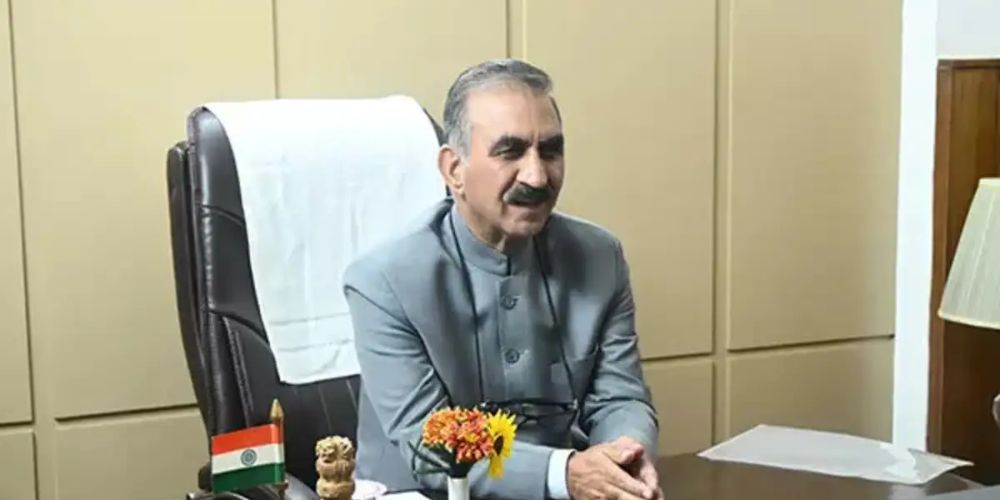Introduction: A Bold Political Shift in Tamil Nadu BJP
In a move that has both surprised political analysts and sparked internal discussions within the Bharatiya Janata Party (BJP), Tamil Nadu BJP president K Annamalai has officially opted out of the state leadership race ahead of the party’s internal organizational elections. Annamalai, who has been the face of the BJP in the Dravidian political landscape since 2020, stated that his decision was personal and strategic, aimed at allowing greater collective growth within the party.
The announcement that K Annamalai is stepping down from the BJP Tamil Nadu state leadership race is not just a routine leadership change—it signals a potential course correction for the party’s southern ambitions. Known for his aggressive campaigning style and youthful charisma, Annamalai had become synonymous with BJP’s brand in Tamil Nadu. His exit raises questions about leadership direction, internal dynamics, and the future of the party in a state where the BJP is still trying to expand its political footprint.
Why K Annamalai’s Decision Matters
The news that Tamil Nadu BJP chief K Annamalai will not contest the party’s internal state polls is significant on several fronts. Firstly, Annamalai brought a fresh, assertive energy to the BJP’s Tamil Nadu unit, often positioning himself as the ideological counter to the Dravidian parties, particularly the DMK. His social media presence, articulate speeches, and frequent press interactions made him one of the most visible state leaders in the national BJP framework.
However, his confrontational approach also attracted criticism—from both within and outside the party. By choosing to withdraw from the state leadership race, Annamalai seems to have acknowledged the need for a more cohesive, perhaps less centralized, form of leadership within the state unit. His statement emphasized his continued commitment to the BJP’s ideology, while also suggesting he will focus on strengthening the party at the grassroots level, especially among youth and first-time voters.
This shift indicates that Annamalai’s role in Tamil Nadu BJP politics may evolve from direct command to a more strategic and supportive form of leadership.
Internal Polls and BJP’s Structural Focus
The BJP’s internal organizational elections, which occur in cycles, are vital for reshaping party leadership from the booth level up to the state core committee. Annamalai’s decision not to run in these elections means that the Tamil Nadu unit will now see a new face leading it into the 2026 assembly elections and beyond.
By opting out, K Annamalai has paved the way for broader leadership participation, which could help reduce factionalism and bring in more regional voices. This could be particularly effective in Tamil Nadu, where local identity plays a major role in political decision-making.
The decision by Tamil Nadu BJP president K Annamalai to opt out of the leadership race could also be interpreted as a tactical retreat. With the BJP still unable to gain considerable traction in Tamil Nadu’s political ecosystem dominated by the DMK and AIADMK, new leadership could re-strategize BJP’s appeal to regional sentiments without compromising on national ideology.

Annamalai’s Tenure: Controversies and Contributions
During his tenure as state party president, K Annamalai turned the BJP into a talking point in Tamil Nadu, often taking bold stands on issues related to religion, language, and governance. He was never afraid to challenge powerful state leaders, including Chief Minister M.K. Stalin, on corruption and policy issues.
Under his leadership, the BJP saw a rise in vote share during local body elections and managed to expand its social media influence. However, he also drew criticism for polarizing rhetoric and being seen as more aggressive than diplomatic. The move by Annamalai to exit the BJP Tamil Nadu leadership race could be a response to such concerns, signaling a course correction that aligns better with the party’s long-term goals in the state.
He was particularly known for his fact-based exposés like the “DMK Files,” which were aimed at unearthing corruption but also attracted significant backlash from the ruling party. While some saw these as bold moves, others within the BJP felt it overshadowed the party’s inclusive development agenda.
Reactions from BJP Cadre and National Leadership
Following the announcement that K Annamalai will not contest Tamil Nadu BJP internal elections, reactions have been mixed. While some state unit leaders welcomed the opportunity for new leadership, others expressed disappointment, citing Annamalai’s popularity among youth and first-time voters.
National leaders of the BJP have not made formal comments, but sources indicate that the party high command respects Annamalai’s decision and may reassign him to a different, perhaps broader, organizational role. The BJP Tamil Nadu president opting out of the state leadership race may also open up conversations about newer leadership models that mix ideological commitment with localized strategy.
For a party like the BJP that emphasizes internal democracy and structured cadre-based politics, Annamalai’s move is being seen as mature and aligned with organizational discipline—a quality the central leadership values highly.
Implications for 2026 Tamil Nadu Assembly Elections
The timing of K Annamalai’s decision to exit the Tamil Nadu BJP state leadership contest is crucial. The next big political test in Tamil Nadu is the 2026 state assembly elections. With the party aiming to expand its base, especially among urban and first-time voters, the leadership will play a key role in setting the tone and direction of the campaign.
A new leader could mean a fresh start, new alliances, or even a different campaign strategy. However, Annamalai’s popularity, especially among the digital-savvy urban youth, cannot be overlooked. Even though he has stepped back from the leadership race, he is unlikely to be sidelined in campaign efforts. His ability to communicate effectively and connect with aspirational voters may still make him a star campaigner for the BJP in Tamil Nadu.
This development might also influence alliance dynamics with the AIADMK, which has often had a tense relationship with Annamalai. A change in state leadership may lead to better coordination between BJP and regional allies.
What Lies Ahead for K Annamalai?
The most pressing question now is—what’s next for K Annamalai? Will he return to the central BJP fold with a national-level role? Or will he reinvent himself as an ideological mentor, staying active in the Tamil Nadu unit without holding a formal title?
Sources close to the development suggest that Annamalai may be asked to spearhead youth outreach programs at a national level, or take up organizational responsibilities in neighboring southern states. With his background in the IPS and a proven track record in electoral mobilization, the party may see him as an asset beyond just Tamil Nadu.
His exit from the Tamil Nadu BJP leadership race may, in hindsight, be seen as a strategic withdrawal that allowed him to pivot to a larger role in the party’s future.
Strategic Lessons from Annamalai’s Move
There are several strategic takeaways from the announcement that Tamil Nadu BJP president K Annamalai has opted out of the state leadership race:
- Leadership doesn’t always mean holding a title: Annamalai has shown that political relevance can be retained even without a formal position.
- Timing matters: Opting out ahead of internal polls allows for smooth transition and avoids factionalism.
- Public perception is critical: His decision also helps rebuild the image of the BJP as a disciplined party that values collective leadership.
- Long-term planning trumps short-term gains: This move may enable BJP to experiment with a more Tamil-rooted leadership style ahead of future elections.
Conclusion: A Political Pivot, Not a Retreat
The decision by K Annamalai to step aside from the Tamil Nadu BJP state leadership race may appear, on the surface, as a retreat. But in politics, every exit is also a pivot. By choosing not to contest the party’s internal elections, Annamalai has opened the doors for broader participation, organizational reshuffle, and potentially even a recalibrated political roadmap for the BJP in Tamil Nadu.
While the immediate future of state-level BJP leadership remains uncertain, what is clear is that K Annamalai’s role within the party is far from over. Whether as a campaigner, strategist, or national organizer, his next move will be watched closely—not just in Tamil Nadu, but across India.
In many ways, this strategic withdrawal from the state leadership race by Tamil Nadu BJP president Annamalai symbolizes a maturing political journey—one that balances ambition with wisdom, and power with purpose.
For More News Update –Dailynewfeeds



